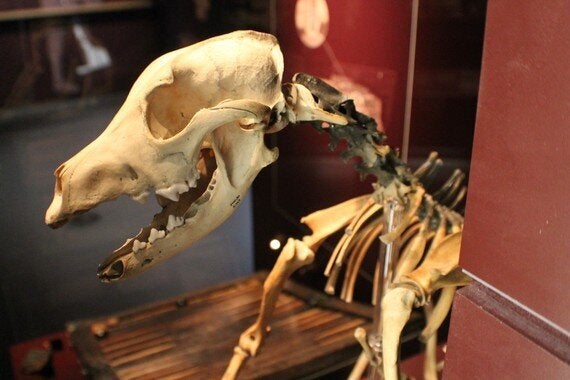There seems to be a popular misconception amongst people that scientists mainly get up to pointless research. Whenever a news article is published about formulae for making the perfect boiled egg, or why toast falls butter side down, or in our case, that the dog on the Mary Rose was brown and male, you get the inevitable comments of "Why are they wasting their time and money on this, when they could be curing cancer?"
What these people seem not to realise (other than that aeronautical scientists aren't really in the medical business) is that the findings in these articles aren't the purpose of the research. Tying it into things that seem frivolous is just a way of getting the attention of the public, who are more likely to discuss articles about everyday annoyances than dry scientific techniques.
For example, in my past life as a palaeontologist a colleague of mine conducted research using techniques usually used to determine evolutionary relationships to answer the question of whether Jaffa Cakes are biscuits or cakes (apparently they, along with fig rolls, form a group called the pseudobiscuits, which contradicts the official line that they are definitely cakes). This was just a bit of silliness, but it helped some people understand how the process of cladistics analysis worked, using a series of distinctive characteristics to determine how things are related.
In cases like these, it's not about the application, but the processes behind it. Boiling an egg or keeping your toast fluff-free isn't the end product of the research, the understanding of the effects of heat on proteins or the aerodynamics of irregular surfaces are where the science is taking them, and they have far more practical applications in chemistry and engineering.

So, what about our brown dog? Who cares if a scruffy mongrel on some warship 500 years ago was any particular colour? Well, again, that's not the end result, merely a step in a process leading somewhere far more practical. We know the dog was brown due to certain sections of the genetic structure that code for proteins that give colour to organic materials. If we can identify these proteins in a 472 year old dog, perhaps we can identify them in human remains? While this might seem to be mainly of benefit to archaeologists, it has applications for crime scene investigations. If a human skull is found, not only will they be able to restore the facial features, and determine the gender using physical characteristics, they'll also be able to identify the hair colour, making identification with known missing persons much easier.

Similarly, last month scientists from the Royal National Orthopedic Hospital used a new technique involving lasers to analyse some of the limb bones of the Mary Rose's crew. The technique picked up chemical differences between bones which were physically deformed (due to rickets) and healthy bones. This process, known as Ramen Spectroscopy, is able to analyse the chemistry of the bones without damaging them, which is great for maintaining the integrity of our collection, but also means that it can be used on live specimens inside the human body. Being able to detect the early stages of rickets without intrusive surgical procedures will allow doctors to treat patients much quicker, and hopefully prevent the increase in rickets that's starting to manifest in children today due to lack of vitamin D and exposure to sunlight. In some ways, it's nice to think that those sailors who lost their lives on the Mary Rose in 1545 defending their country are still doing their bit to the protect the children of the 21st century.
So no, archaeologists aren't curing cancer, they're just helping you understand how doctors are working to protect children from avoidable diseases.
